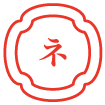Kaikado | World’s Oldest Tea Caddy Maker | Craft
History of kaikado
Kaikado was founded by Kiyosuke Kaikado in Kyoto during the Edo era (1603-1868 AD) when it was commonplace to store tea in earthenware jars. He provided an original means of storage while upholding native traditions, which left a lasting impression on the locals and tea merchants. Over the past three hundred years, Kaikado’s craftsmanship and heritage has been passed down six generations.
Takahiro Yagi, the current maker, has made it his lifework to continue the family’s workshop and adapt the craft to the needs of the present market. The modernised image and use of the tea caddies has retained the approachability and relevance of Kaikado for everyday use.
Making of Tea Caddy
Located by the Kamo River in the residential streets of Shimogyo-ku, Kyoto, the small workshop has four to six craftsmen working at individual stations. Each of the specialist craftsmen provides expertise and years of experience. The dye and mould from the founding generation are still in use today and these handmade tea caddies follow over 140 meticulous steps, staying true to the craftsmanship and process of Kiyosuke Kaikado.
There is a constant rhythm of hammering upon entering the workshop. This repetitive sound may go unnoticed but is an essential part of caddy making, with the craftsmen listening carefully to ensure that each step is in accordance with the next.
Each tea caddy reveals its imperfections through its sound. Taka listens to the tone of the metal being hammered as an indication for when the shape is correct before moving onto the next stage. Often when he is supervising or training younger craftsmen, he is able to monitor their progress simply by listening.
The Patina Of Tea Caddy
Each tea caddy is hand built to last generations of use and will develop a rich patina over the years while remaining timeless in design. The patina of the tea caddies will develop according to the owner’s particular touch and use, making a very bespoke finish to each caddy.
The bright and vibrant tint of copper will slowly form a warm leathery patina while the golden, mirror-like surface of brass will develop into rich, dark sienna.
Kaikado Showroom
Based in Kyoto, the original workshop of Kiyosuke Kaikado has been converted into a showroom. Tucked away behind the showroom is the workshop where the fifth and sixth generation maker, Seiji Yagi and Takahiro Yagi, work.
Seiji and his wife still live above the showroom, and parked outside is Taka’s racecar. Taka, the sixth generation maker of Kaikado, shares his passion for tea caddies with racecar driving.
The only hint of what is inside is this small window by the entrance, which reveals an enticing glimpse of Kaikado tea caddies highlighting its simple and timeless form.
The original workshop has since been converted into a contemporary showroom with the full Kaikado collection on display including century-old tea caddies. The showroom retained some of the fittings and tools from the workshop, which informs the design of the interior reminiscent of Kaikado’s roots. The classic elements including the traditional tatami and shoji panels complement the contemporary appeal of the tea caddies.













